INSECTS AND VEGETATION NEAR THE SEA
After a relatively warm but foggy week, the weather here it's getting properly cold. The morning was frosty, the sky is now cloudy and the overall atmosphere it's pretty dark. So I decided to spend some time with sunny old photographs taken in the first days of September 2021.
I encountered plenty of insects back then. Only two spiders. And I photographed quite a few plants that grow on the stony terrain near the sea.
Here you can see the Cypress spurge (Euphorbia cyparissias). In the following shot ...

... a grasshopper is resting among these plants late in the evening.
Locusta migratoria is the name of the species ...
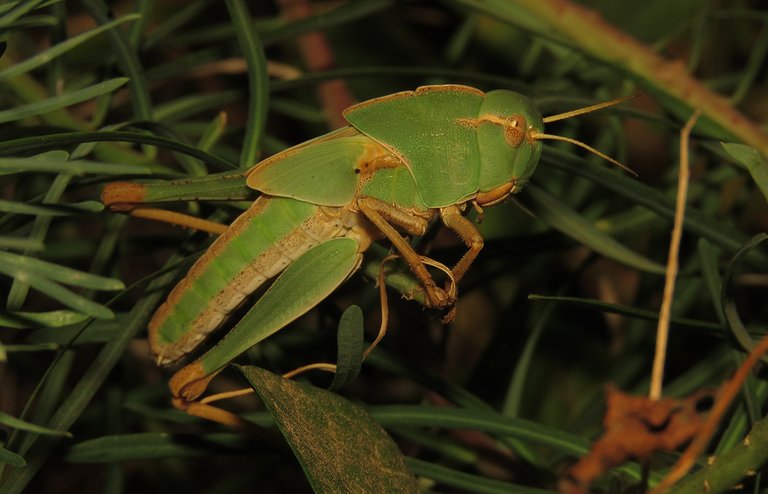
... and this is a nymph, the young, not completely developed insect.
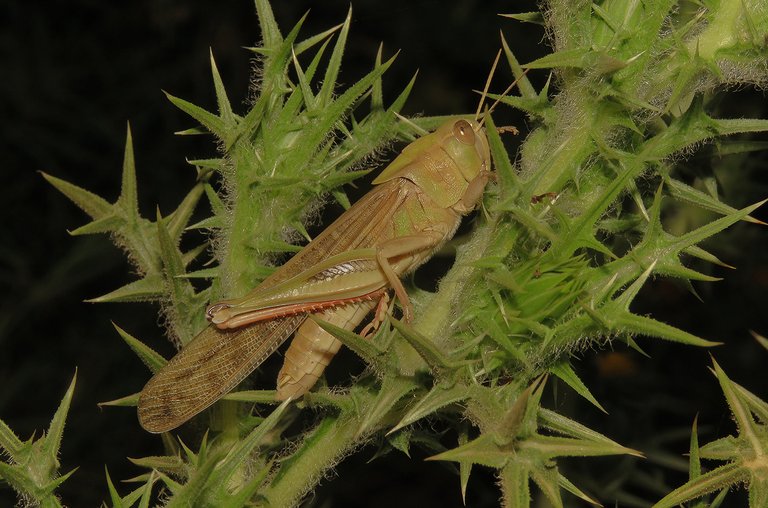
Here, among the thorns of the Golden thistle (Scolymus hispanicus), you can see the adult Locusta migratoria grasshopper.
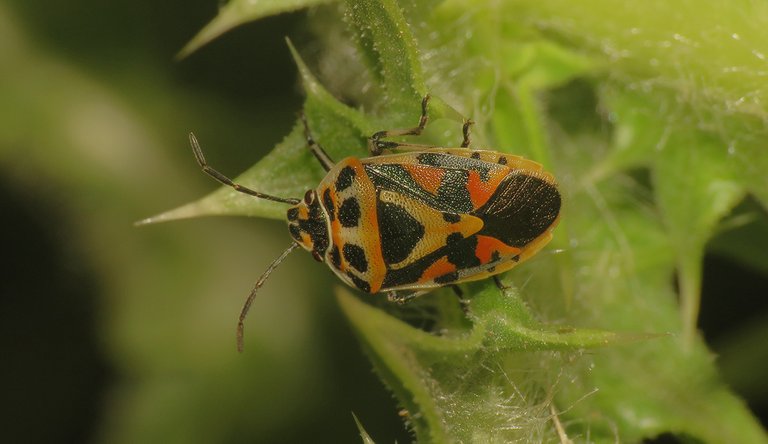
This colorful shield bug, the Eurydema ornata, was photographed on the same plant.
Dense growths of golden thistle can cover large parchments of coastal terrain and produce plenty of beautiful & nectar-rich yellow flowers.
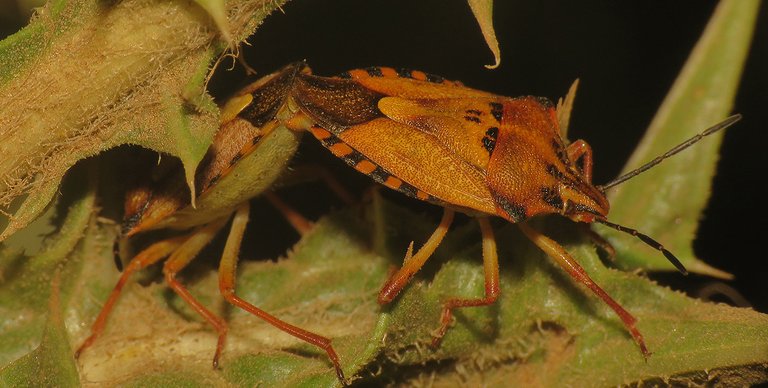
Many insects find food and shelter among the thorns of this plant. Here you can see a mating pair of Carpocoris purpureipennis shield bugs.
In this enlargeable photograph, you can see more Carpocoris purpureipennis. Another mating pair and a solo shield bug. This species can appear in big numbers on the coastal vegetation.
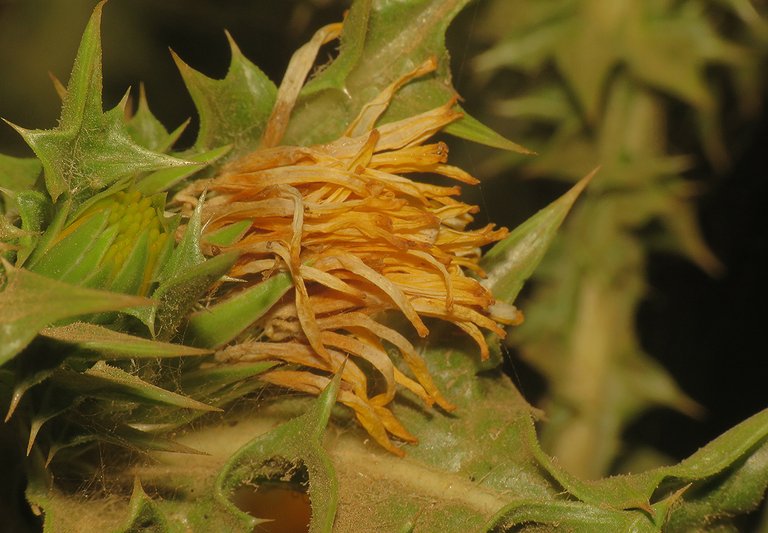
One morning, while sniffing around these golden flowers ...
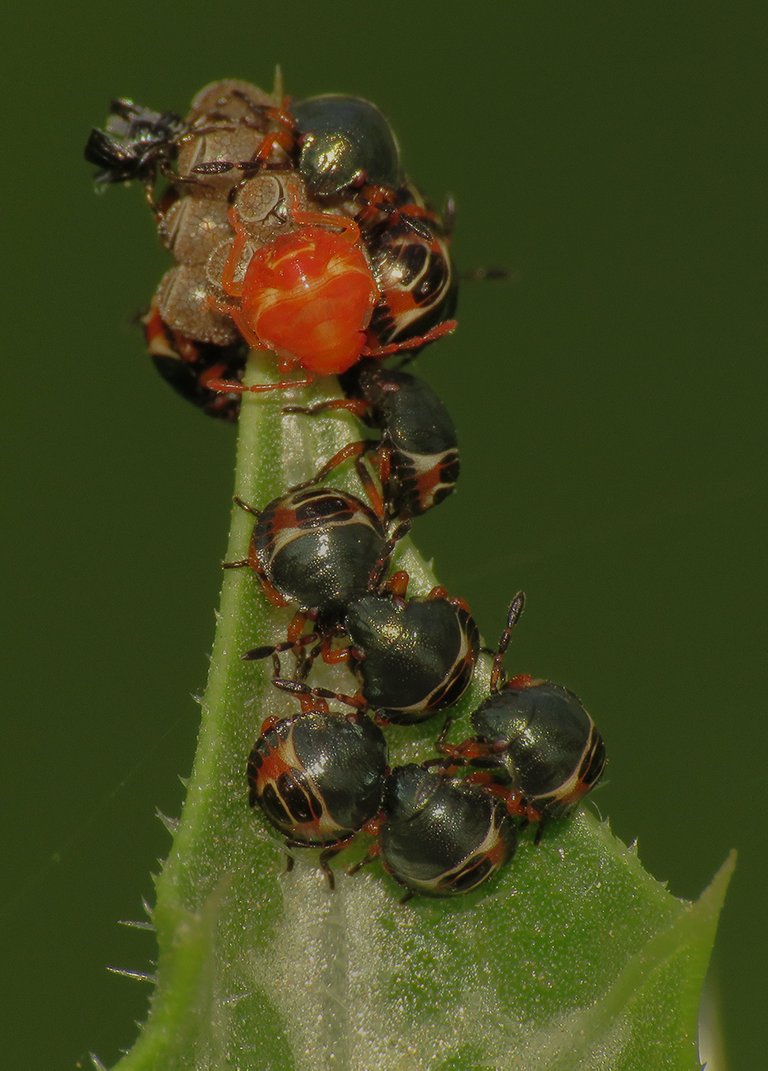
... I noticed what looked like a cluster of minuscule grains on the thorn of Scolymus hispanicus.
At one point some of those grains started moving.
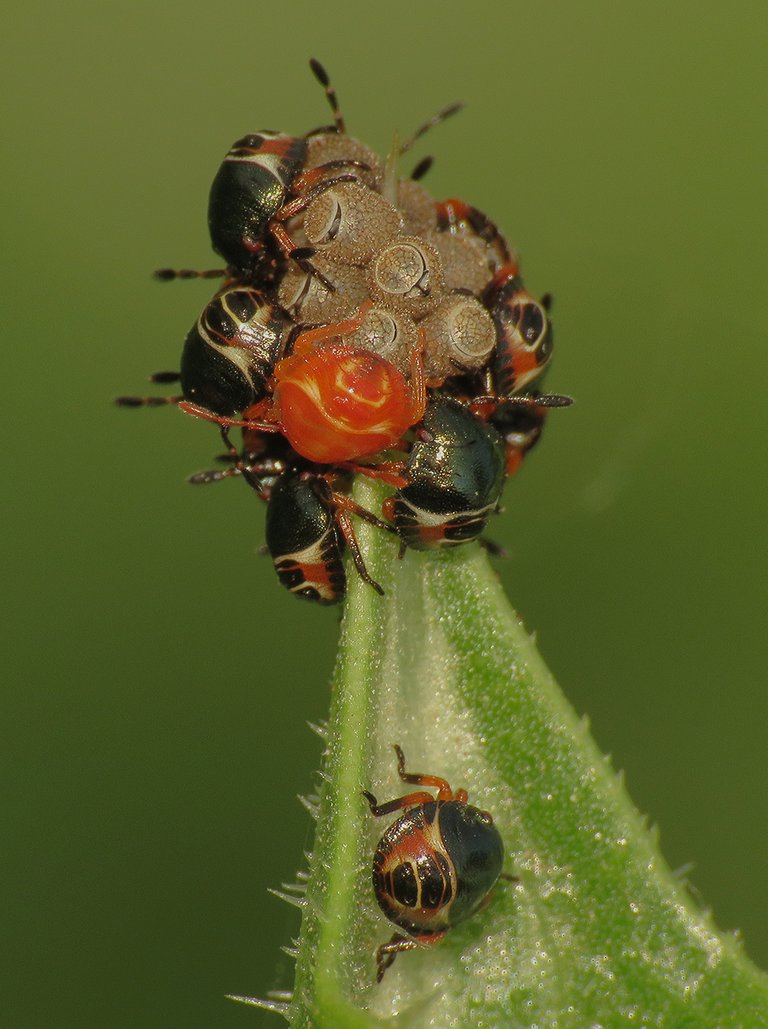
Only after taking a good look through the macro lens ...
... I realized that these are young, recently hatched shield bugs.
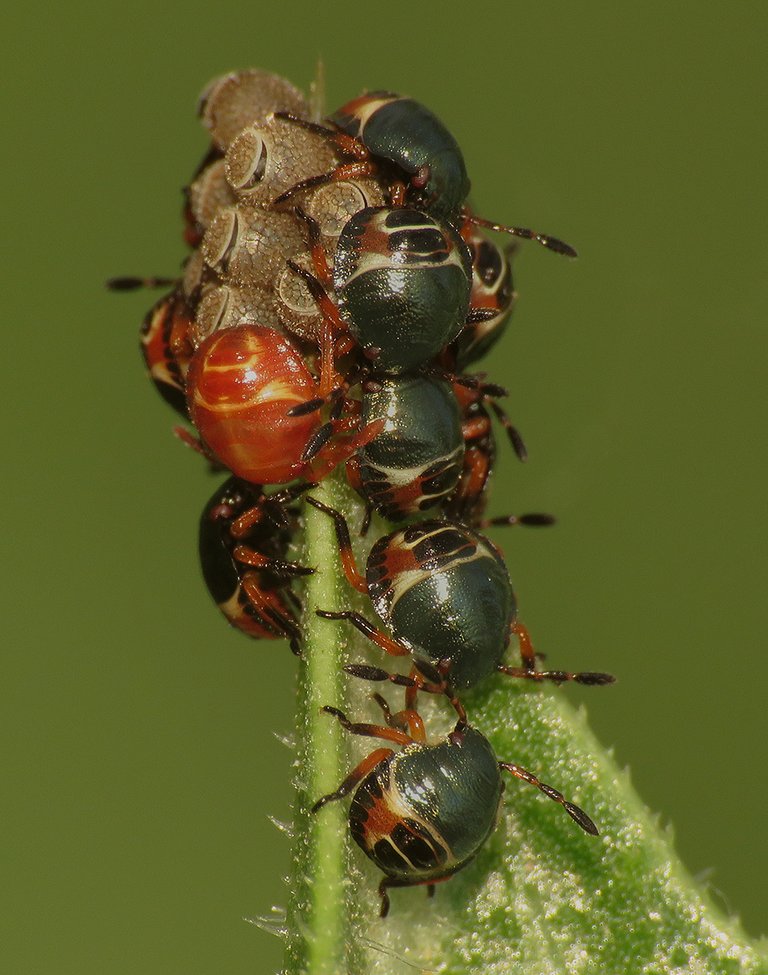
You can see a bunch of Carpocoris purpureipennis babies ...
... in this long series of shots.
The female shield bug laid the eggs around the top of the sharp thorn, and while I was photographing, the minuscule nymphs were slowly descending to the base of the thorny leaf.

One of the nymphs came out of the egg a bit after the others, so it's still soft and pale. I mean, it's brightly colored actually, but it's less dark and the definitive markings & colors still have to be formed.
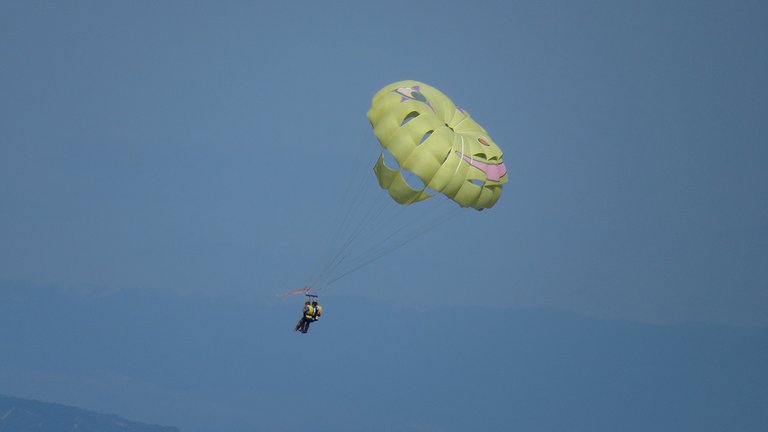
All the photographs in the first part of the post were taken late in the evening or early in the morning, so they aren't very sunny after all. That's why I included these flying tourists ...
... and plenty of sunny blue sky.
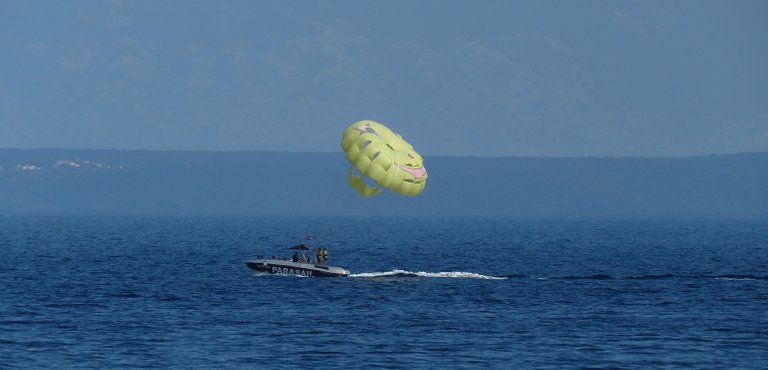
These leisure shots were also taken at the beginning of September. But around noon, when I was more like a tourist, less like an obsessed macro-geek.
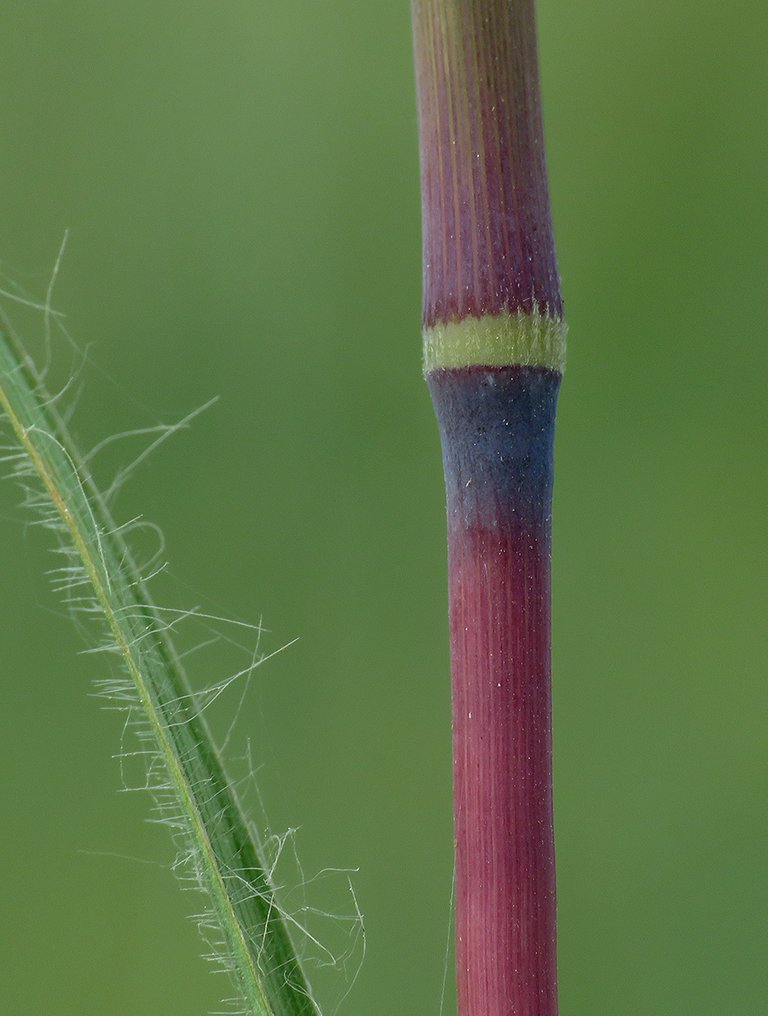
Here you can see a very elegant and colorful straw of some grass.
This caterpillar, I don't know the exact species but I'm pretty sure that it's a larva of some small moth, has built a loose silky shelter in between two leaves of the blackberry shrub.
A bit further on another blackberry shrub, I found another larva of the same kind.
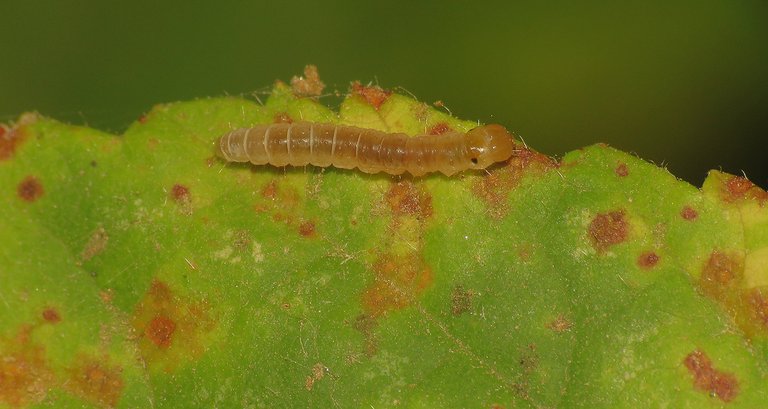
This one was crawling across the leaf.
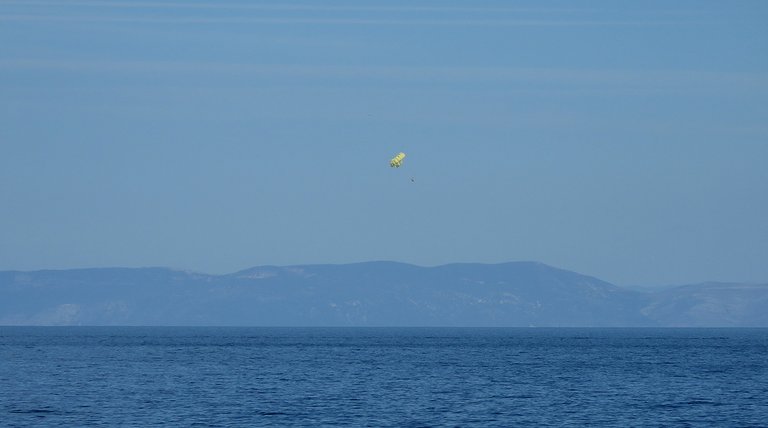
Meanwhile, in the blue distance ...
... the tourists were hanging in the sky. The parachute looked like a celestial jellyfish ...
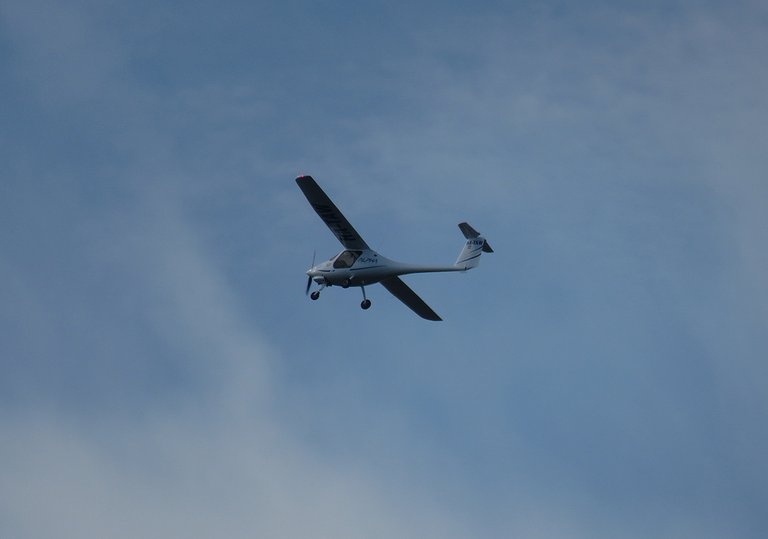
... and I also saw some strange little machines up there. This small airplane, smaller than any other plane I ever saw ...
... and this weird little helicopter thing.
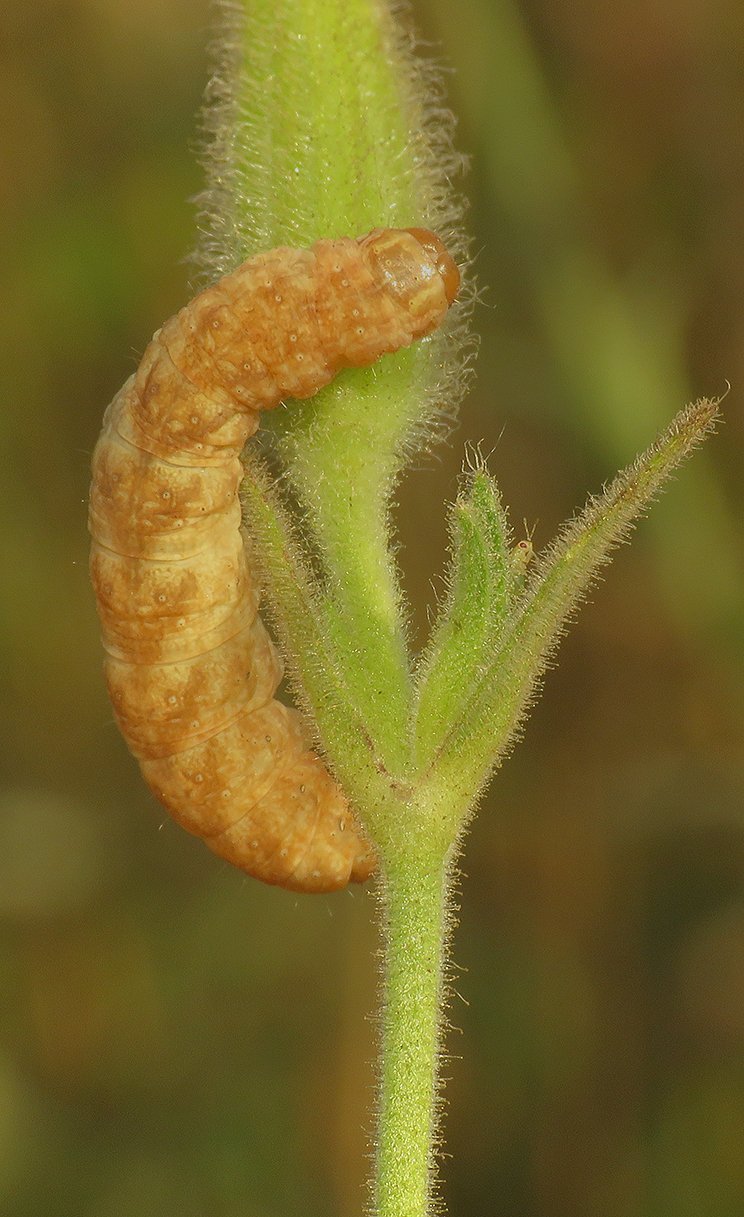
Here you can see another moth larva. This one was considerably bigger. And was a different species, but I can't tell you the name. There is a great variety of moths around. Many caterpillars look pretty similar, and my knowledge about them isn't that great. The larva in this photograph is feeding on the green and juicy Silene latifolia, but many other plants ...
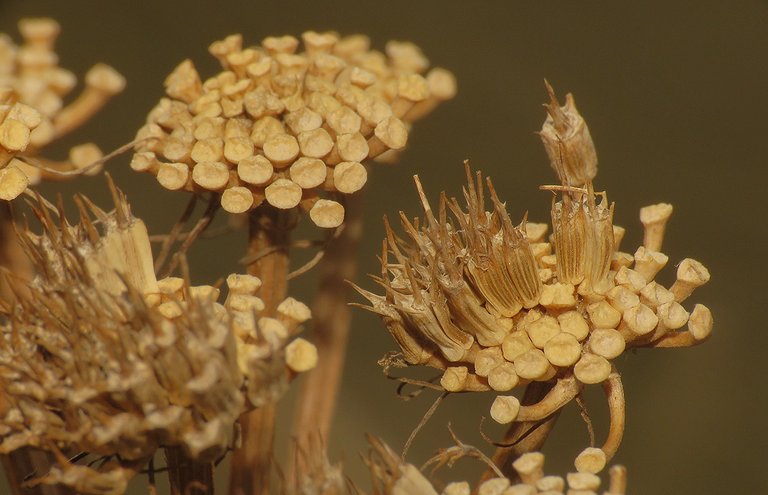
... were mostly or completely dry.
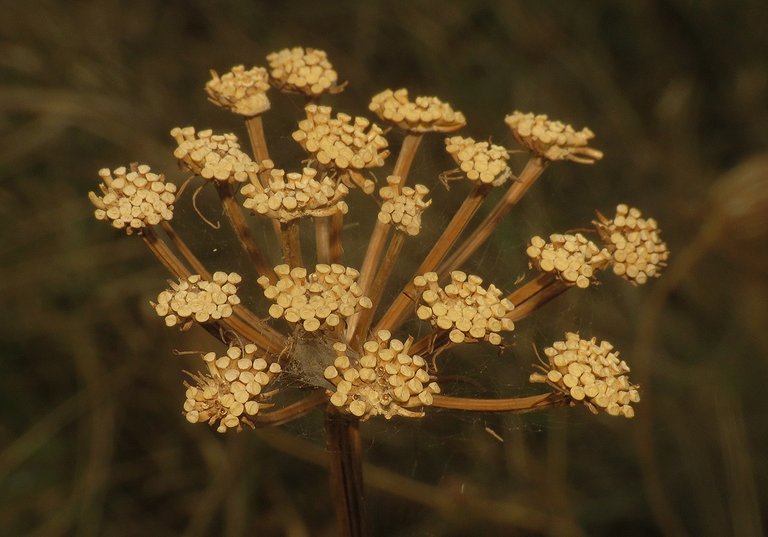
Here you can see the dry flowerhead and seeds of the Oenanthe pimpinelloides plant.
In this five-shot series, you can take a look at the dry remains of some plant that is currently unknown to me.
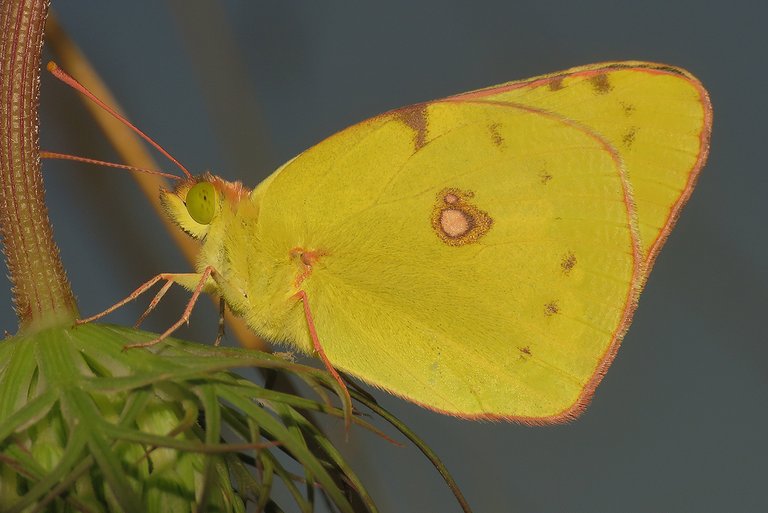
This lovely butterfly ...
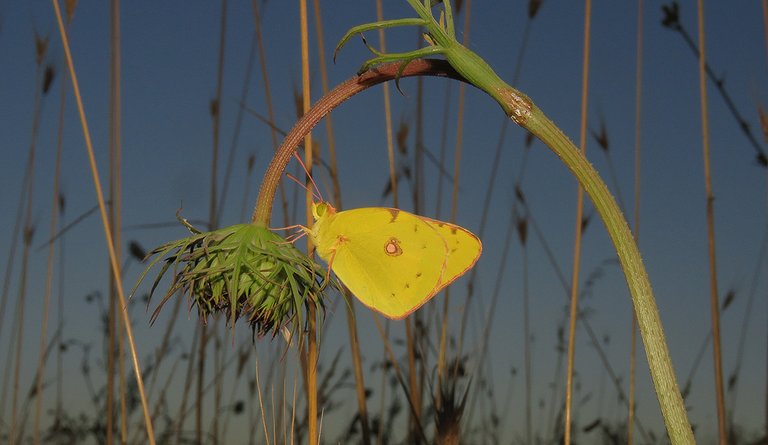
... was resting on the flowerhead of the wild carrot (Daucus carota).
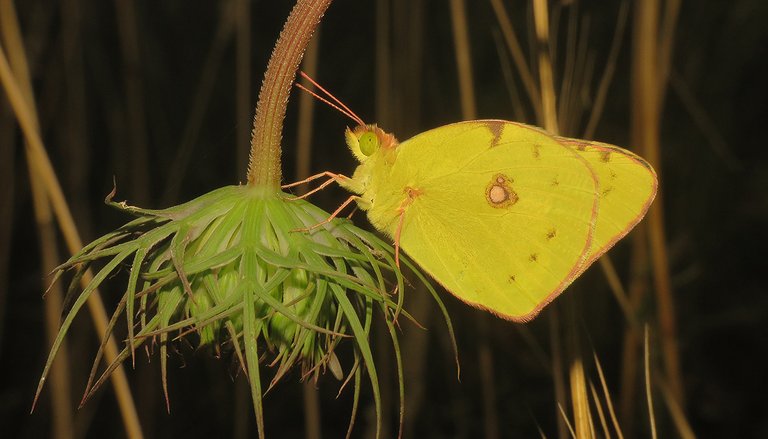
Colias croceus is the name of the species.
Meanwhile, hundreds of meters from there ...
... another group of tourists was floating in the air above the bay.

The growth of this interesting plant often fills the small cavities in or in between coastal rocks ...
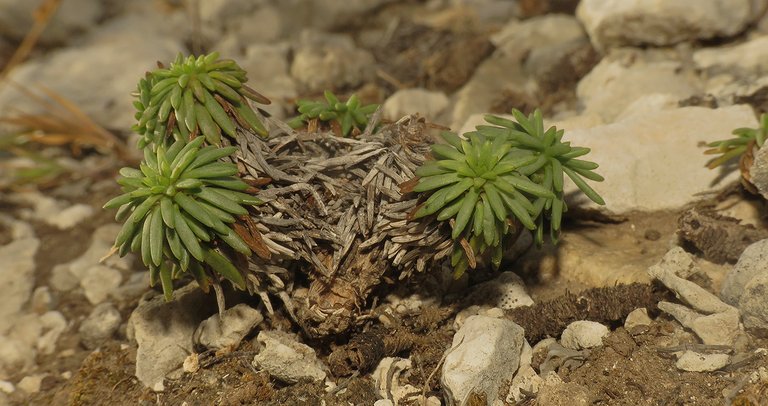
... but as it grows and spreads ...
... it forms a nice green carpet that can cover larger parchments of the stony terrain near the sea.
Plantago subulata is the name of the species.
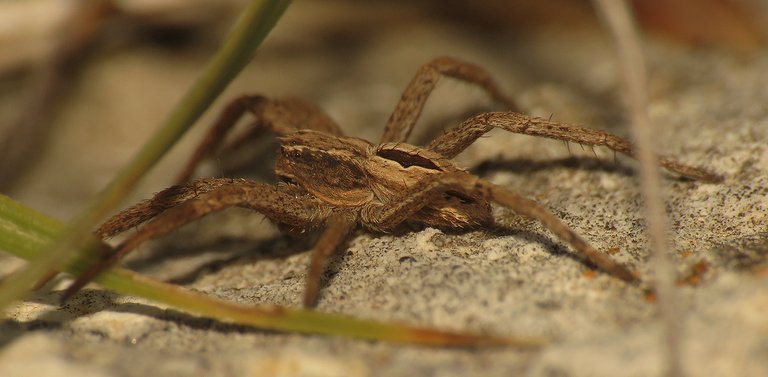
This small spider was also found there ...
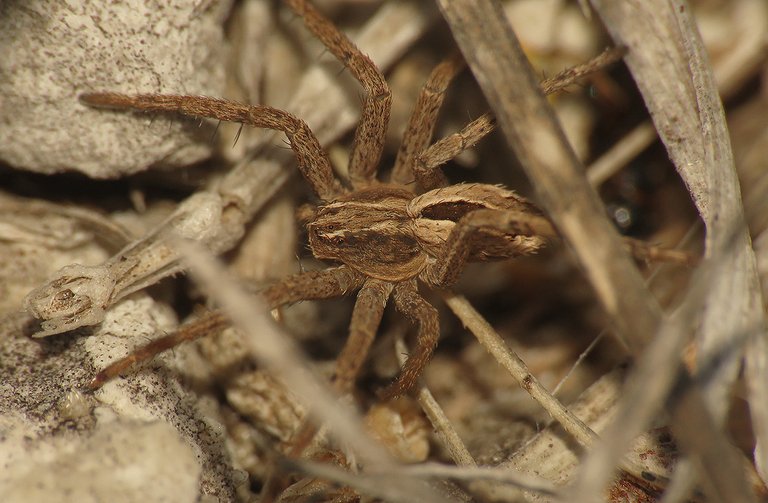
... on the rocks.
It was well camouflaged and hard to notice in that environment.
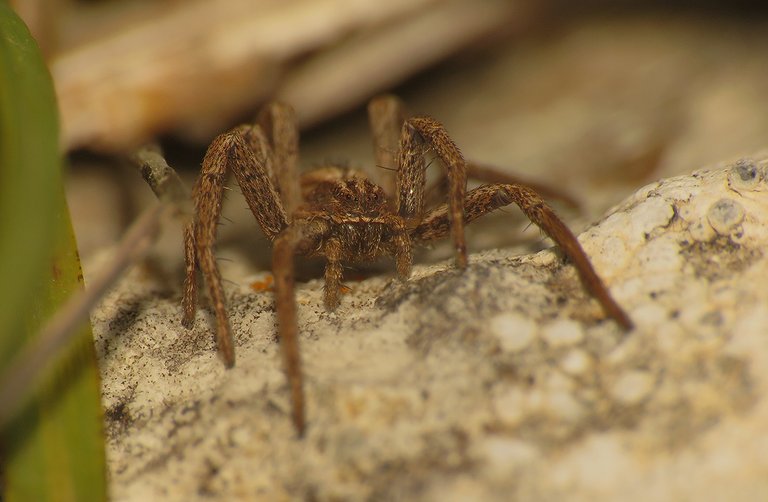
Thanatus arenarius is the name of this species ...
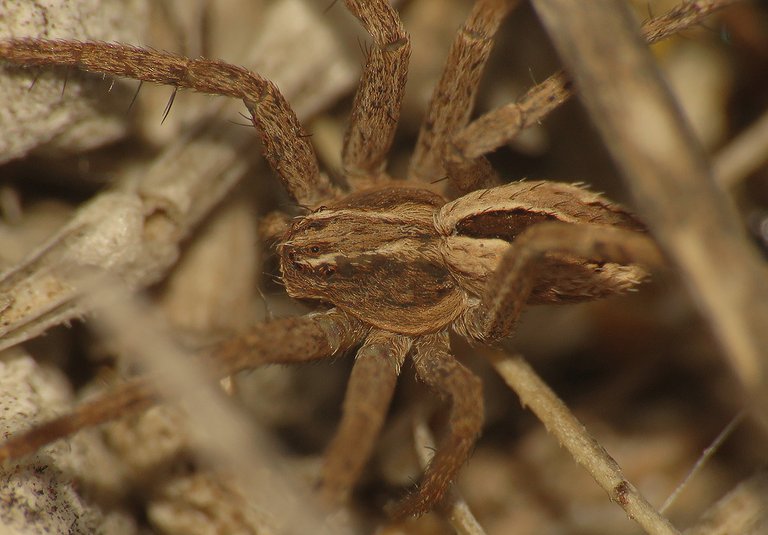
... that inhabits only dry, stony areas.
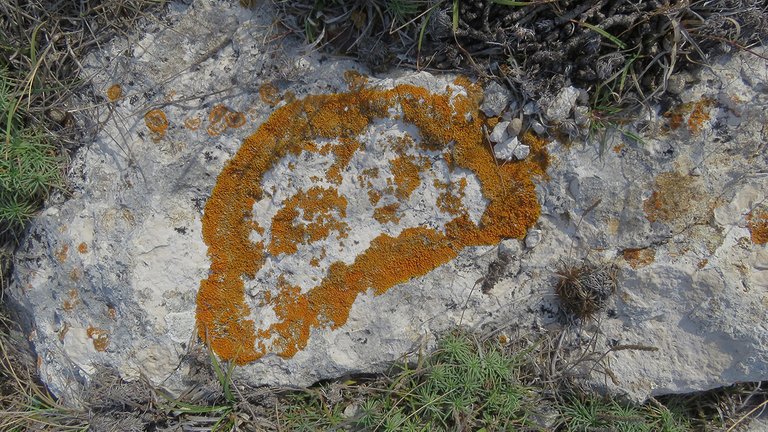
Some rocks are partially covered with Xanthoria parietina lichens.
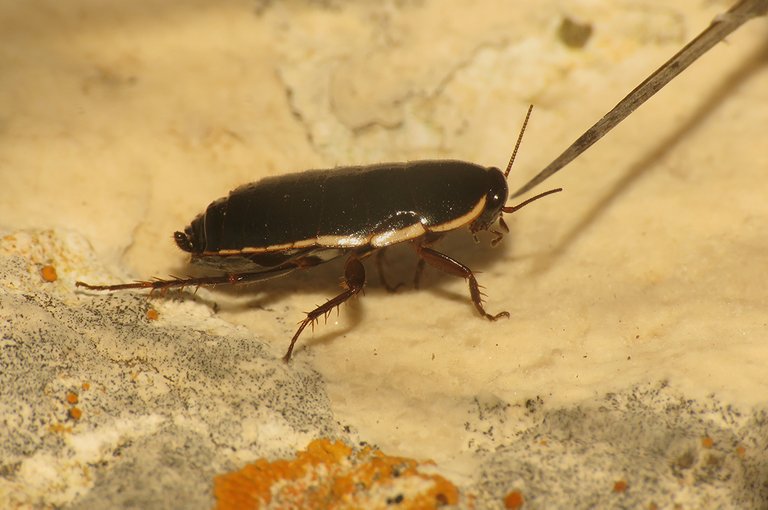
Here you can see the small Loboptera decipiens, a very common cockroach in this seaside area. The photograph was taken late in the evening. This is a nocturnal species.
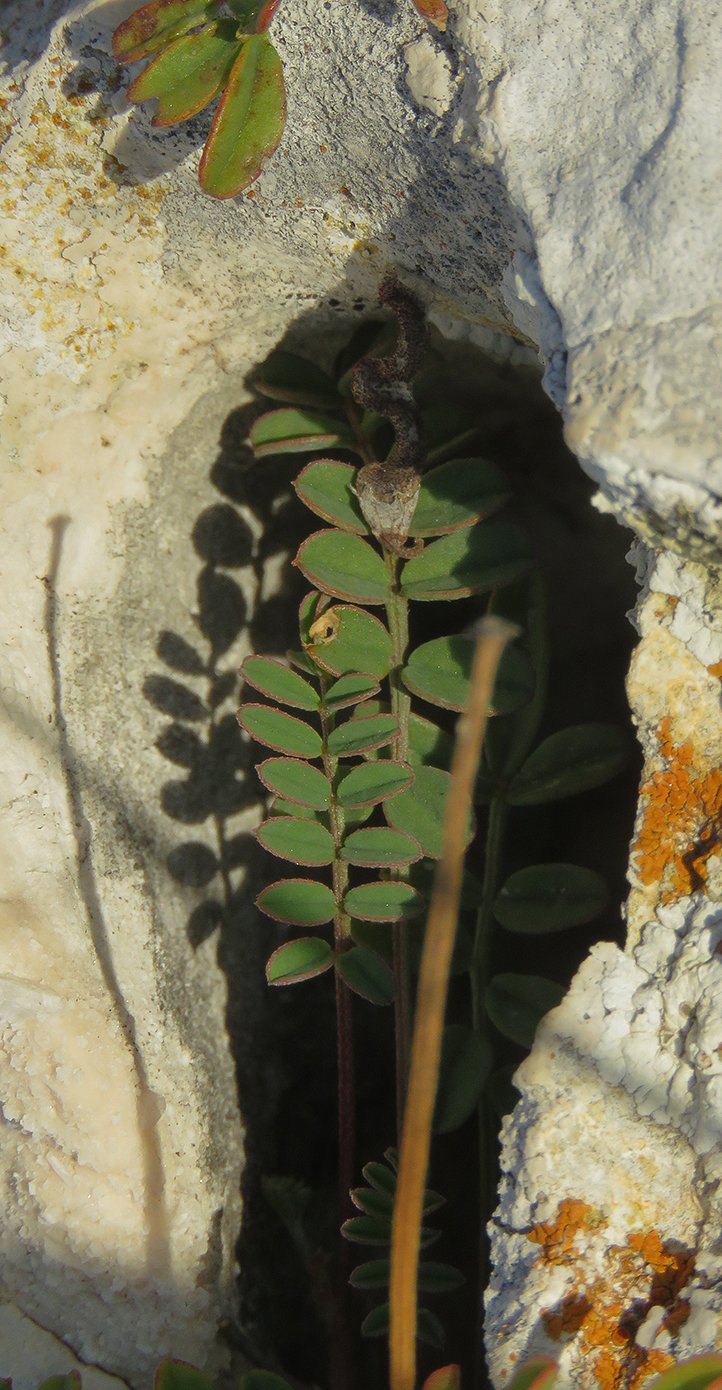
This is the Hippocrepis comosa ...
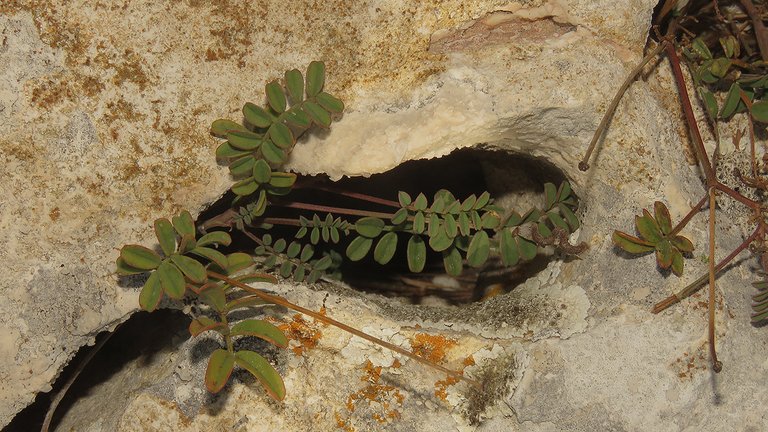
... a type of vetch that grows only on chalk and limestone soils.
Here you can see the Stemmatophora brunnealis, a moth from the Pyralidae family, that has landed to rest on the rocks.
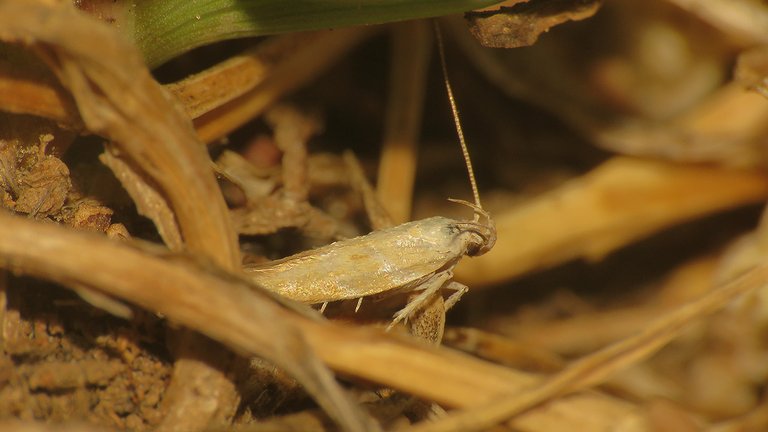
This much smaller moth, don't know the species, was hidden in the dense little jungle ...
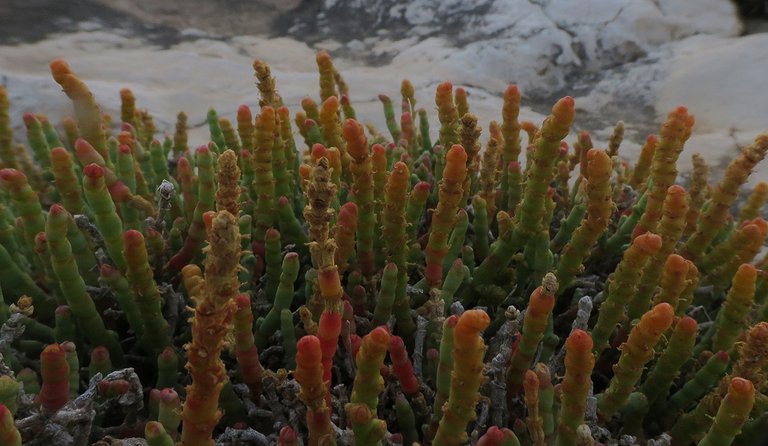
... under the growth of this plant ...
... the Arthrocnemum macrostachyum. I was photographing after the sunset, the light was pretty low, so I took a couple of easy shots first, using the flash ...
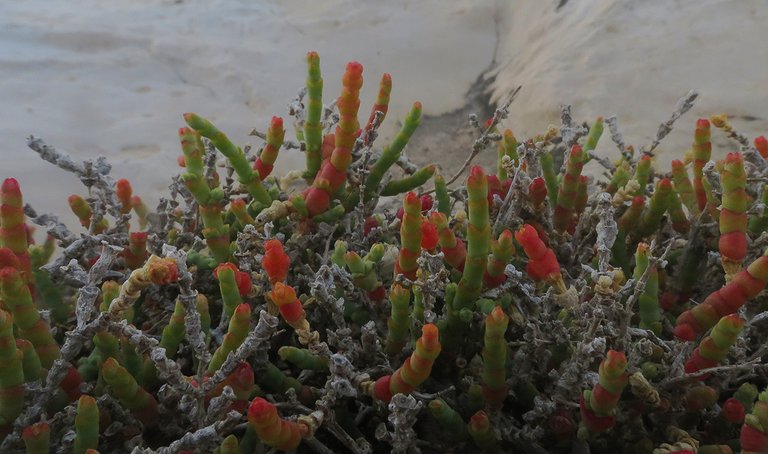
... but the evening atmosphere looked really nice in its unaltered version, so I decided to take a couple of long exposure shots too.
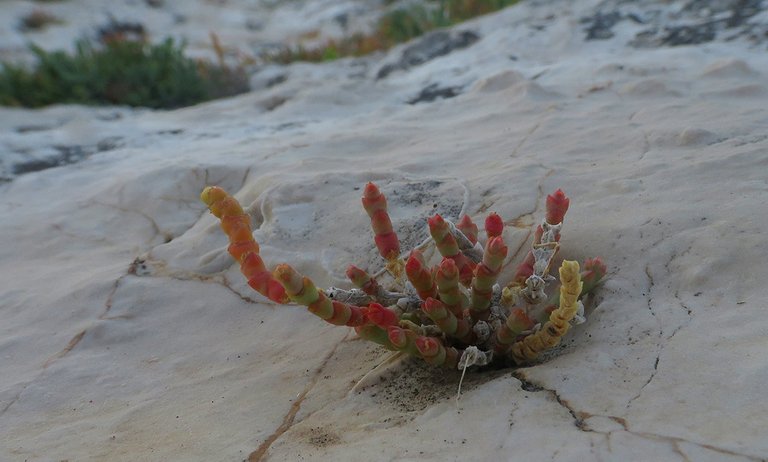
The small sprouts of this plant look like strange little islands.

This beautiful white feather fallen from a seagull ended up caught among the leaves and shoots of coastal plants. In this photograph, you can see leaves of
Crithmum maritimum mixed with Arthrocnemum macrostachyum.
The Lagria hirta beetle in this photograph was photographed on Crithmum maritimum in bloom.
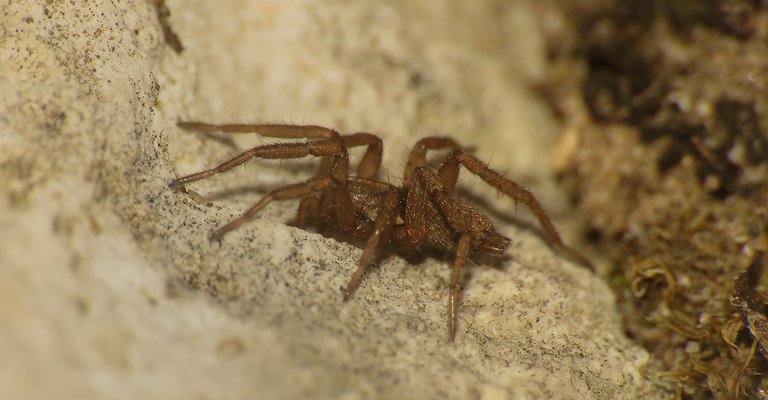
Here you can see another small spider that I found near the sea in those days. I saw it only for a second and was able to take only one shot, so can't tell you what species is this.
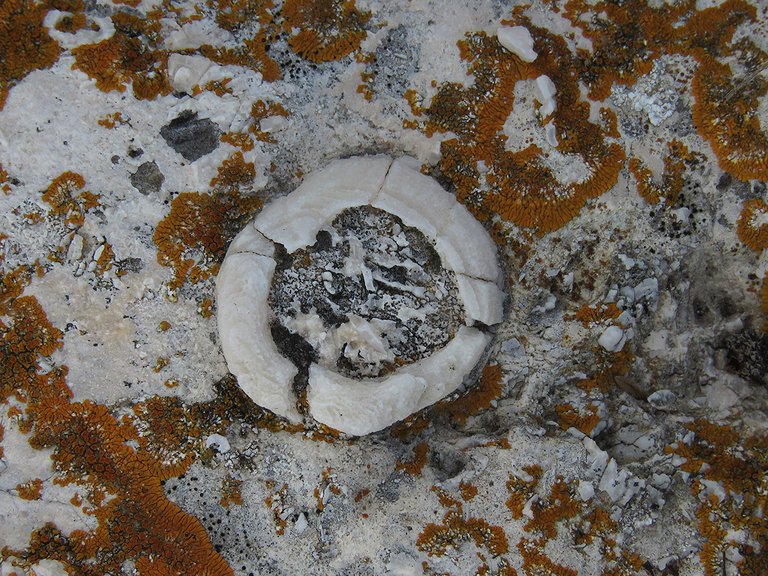
In some stretches of the coastline, the rocks are filled with fossils of Rudists. Rudists were strange box-, tube- or ring-shaped bivalve mollusks that are completely extinct now. They formed large reefs back then, during the Cretaceous when they were very abundant and diverse. Nothing closely related to them can be found in the current fauna of this planet.

This is the Arachnocephalus vestitus, commonly known as the Hairy Scale-cricket. They can often be found on the coastal rocks ...
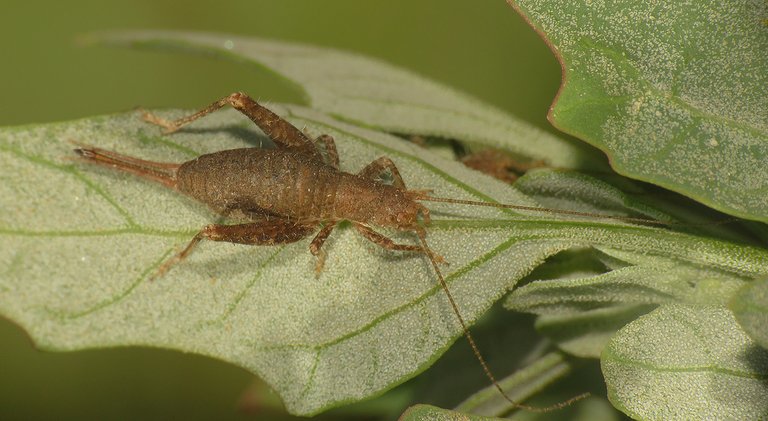
... but also on the taller, more lush vegetation further from the sea.
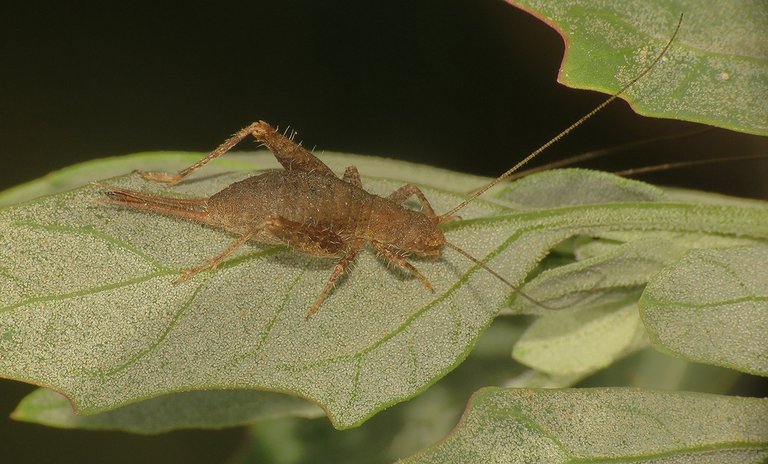
This one was photographed on the Chenopodium album plant.
This weird, kind of "woolly" little insect ...
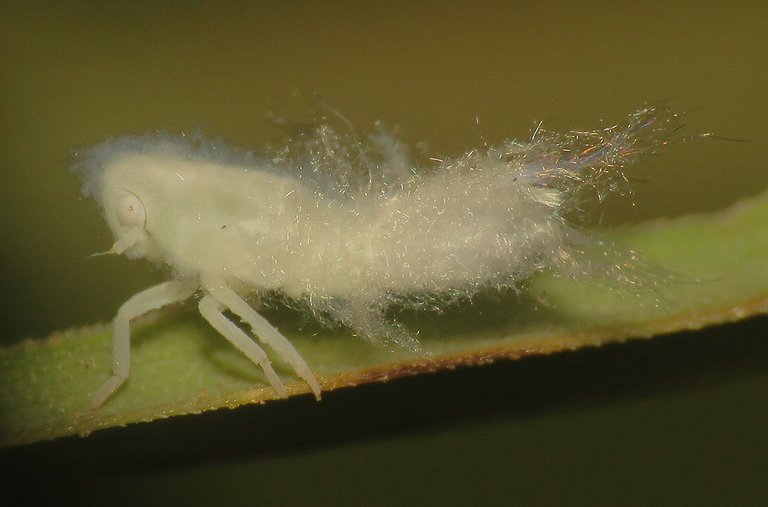
... is the nymph of the Metcalfa pruinosa, invasive planthopper from North America.
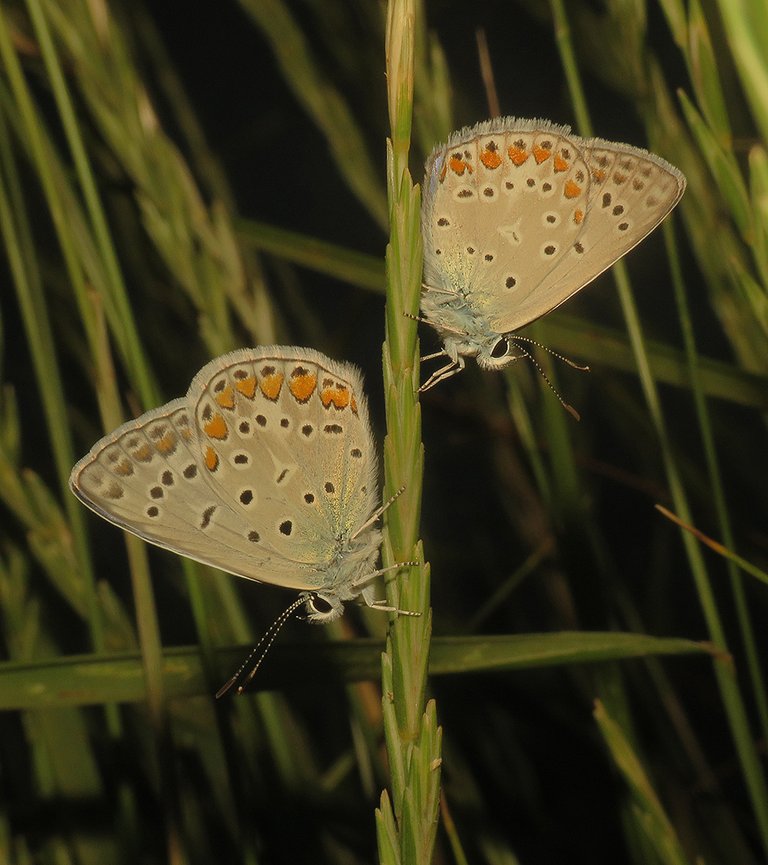
Here you can see two Plebejus argus butterflies.
They were resting in the tall grass, late in the evening.
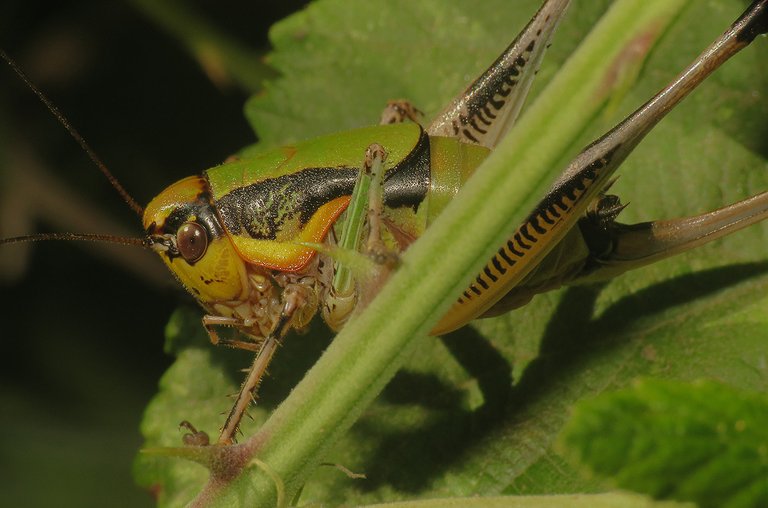
This cricket, the very common Eupholidoptera chabrieri bushcricket, was photographed on the blackberry shrub.
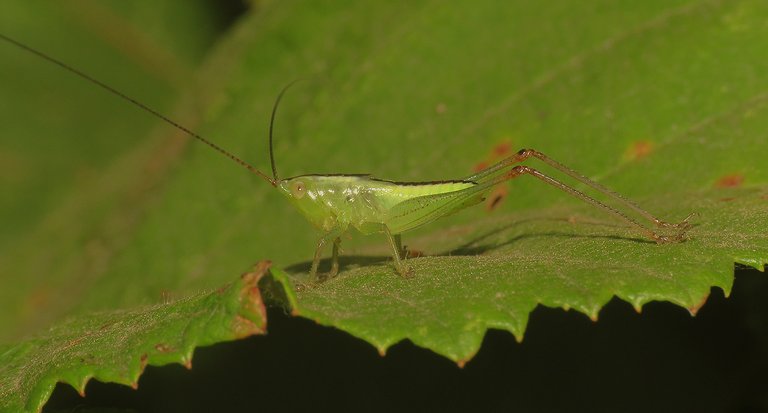
On the same plant, I found also this young nymph of the Conocephalus hastatus bushcricket.
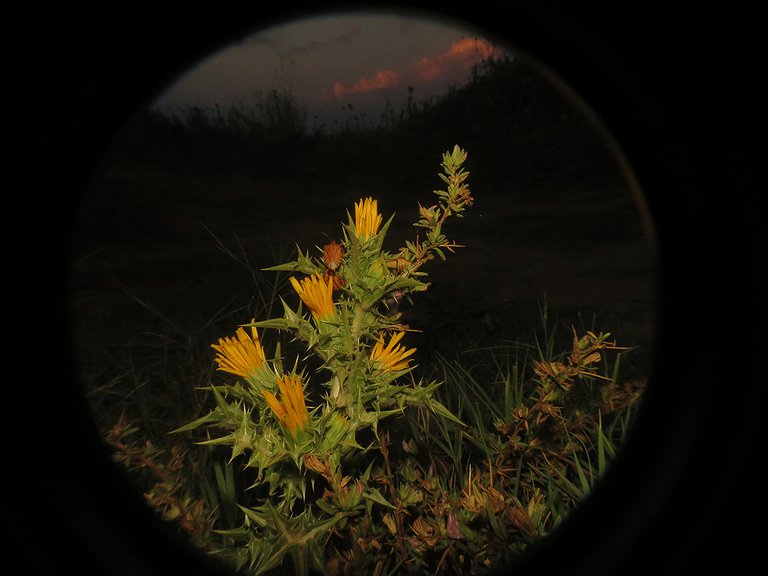
And that's all. Hope you enjoyed this summer excursion in search of flora & fauna. As always in these posts on HIVE, the photographs are my work.
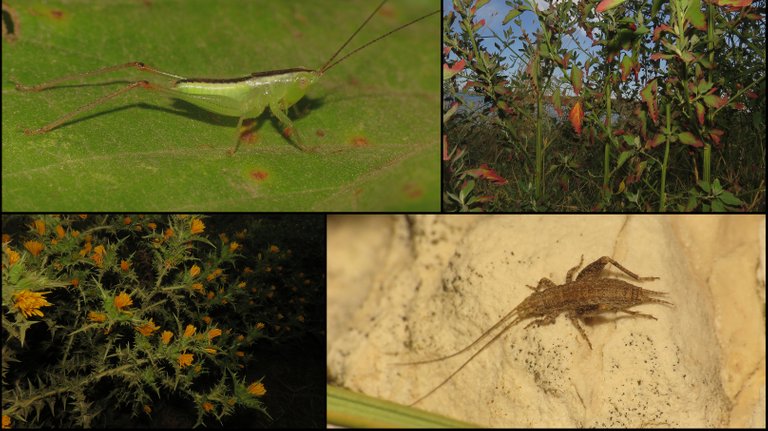

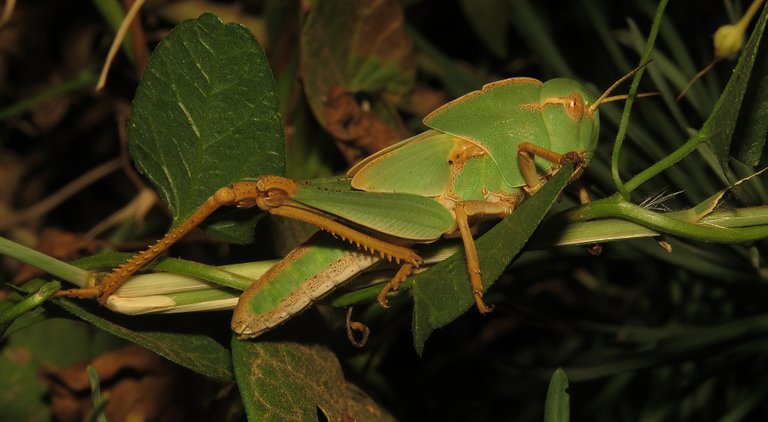
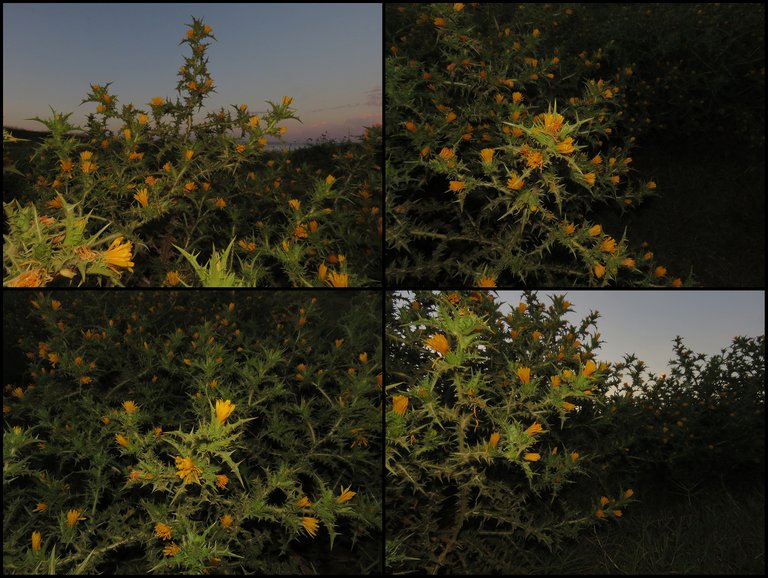


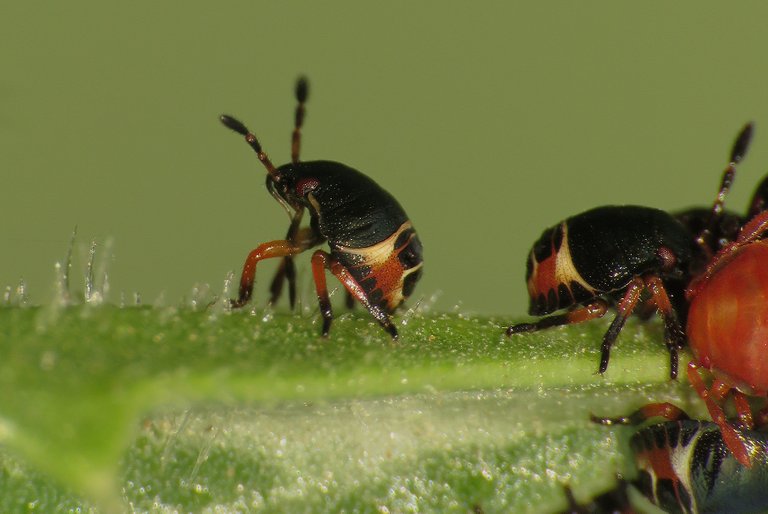
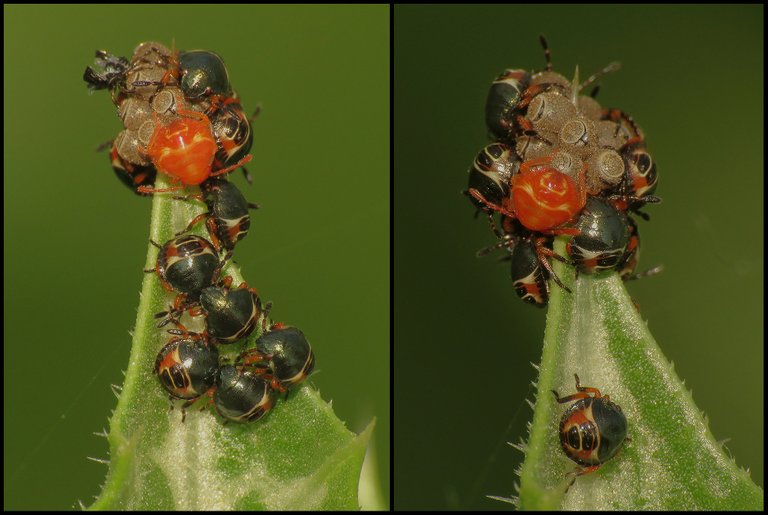
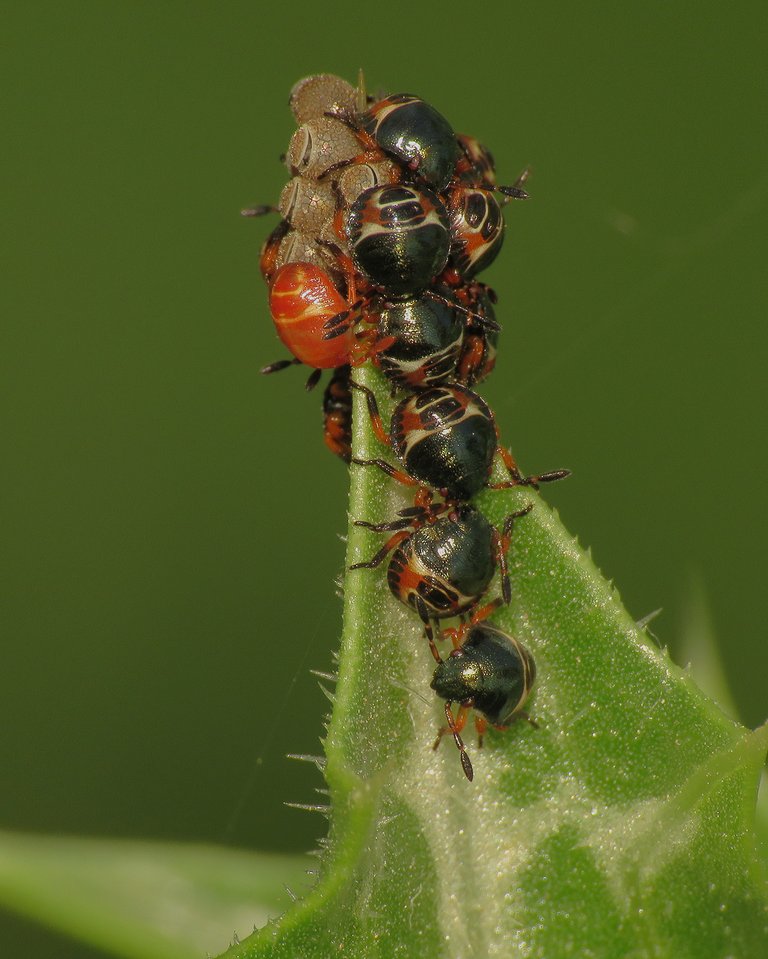

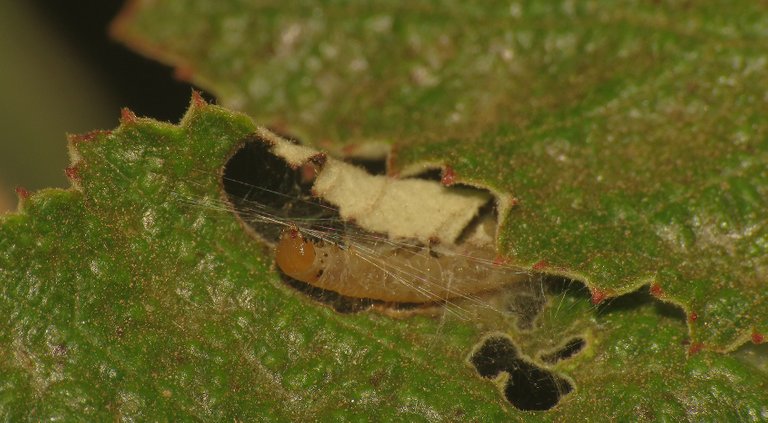
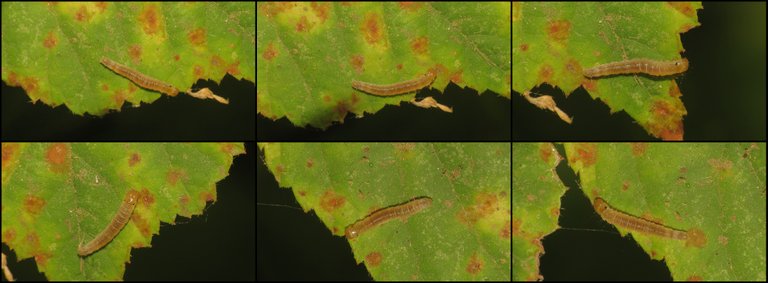
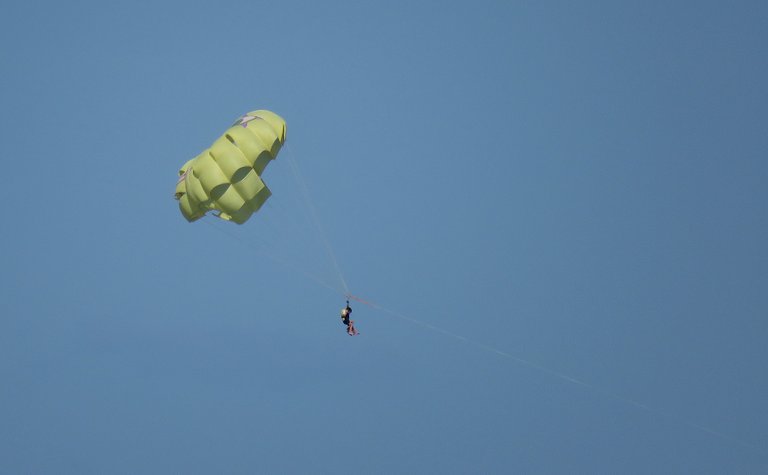
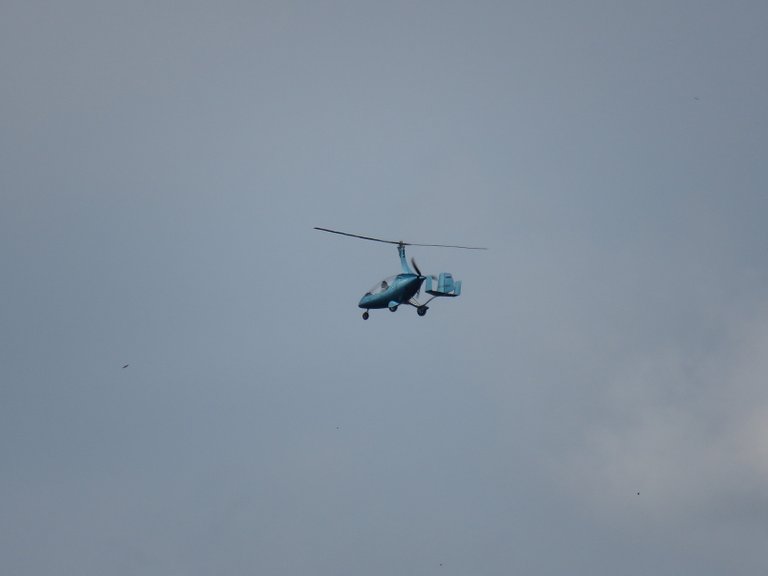
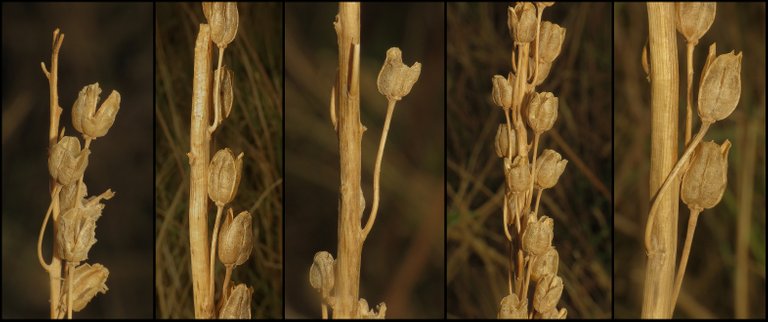

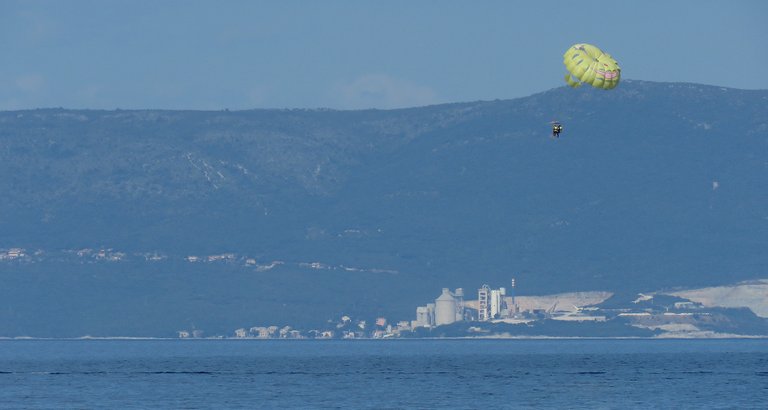
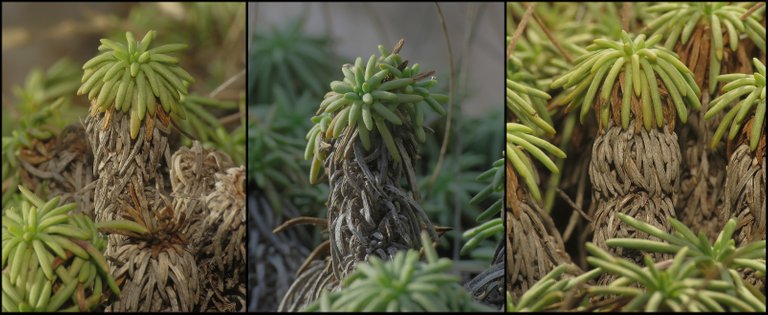

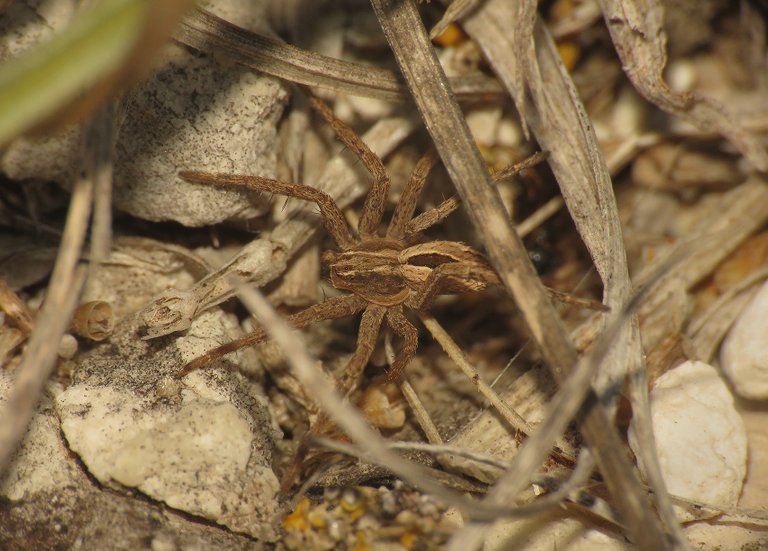


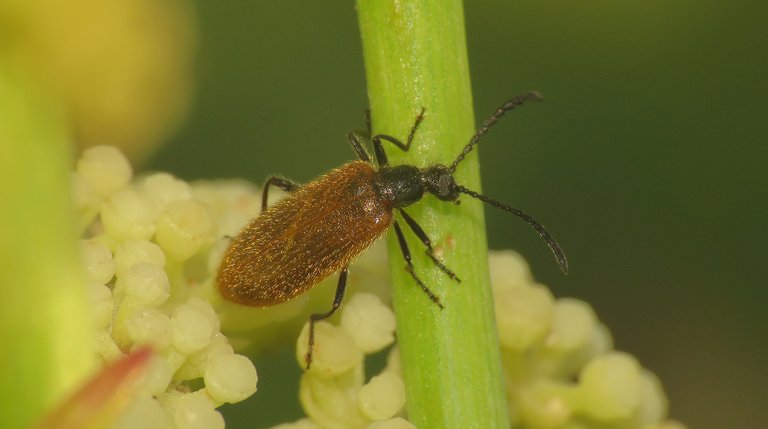
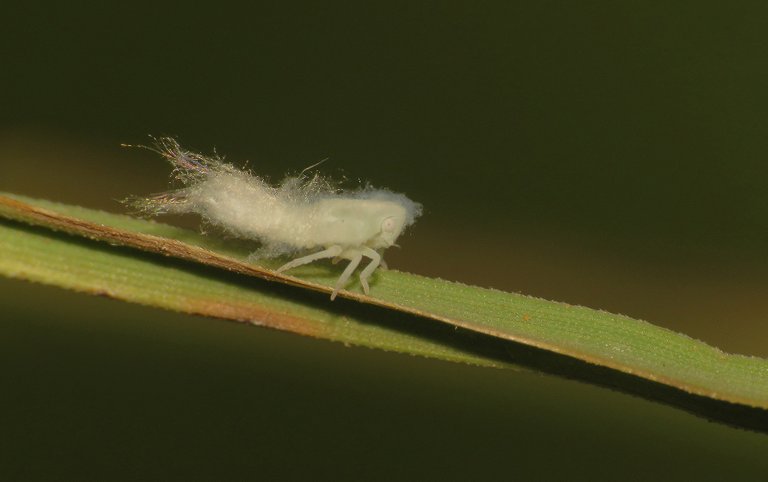
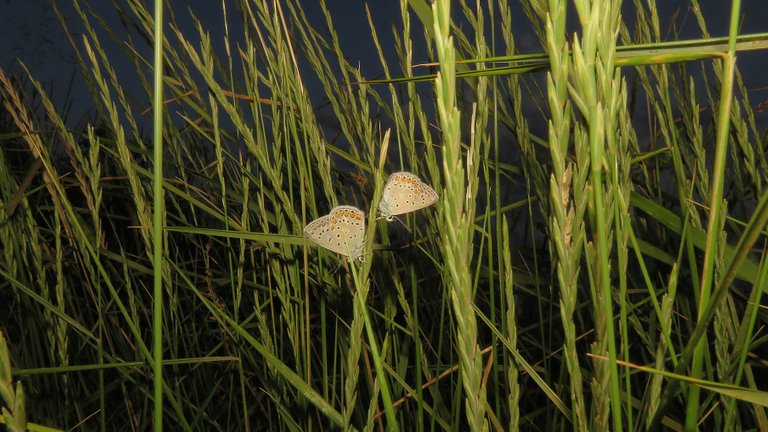
Wow these are all Beautiful pictures, from the grasshopper to the bug, to other insects, to the parachute and plane.
You really had a great walk, these are lovely sight to behold, what's the name of your phone and it's specifications?
Wow I really like the capture of those insects they have beautiful colours.
Those parachute pictures are really lovely. I would love to try it out lol🙂🙂I’m sure I will be scared 🤣🤣
I'm definitely too scared 😀don't feel very safe up in the air.
🤣🤣🤣🤣I can be fun though 🙂
I like every picture
We appreciate your work and your post has been manually curated by zoology team (oscurity,nelinoeva) on behalf of Amazing Nature Community. Keep up the good work!
a post very complete!
We appreciate your work and your post was manually curated by @none! from the DNA team!
Reach us on Discord to learn more about the project!
Thank you 🙂
oh wow!!!! such a lot of work in this post, so many photos!!!!
my kids loved looking at them (my 2 year old was on my knee) she loved the big eyes.
Thanks for sharing
Sarah
Thank you 🙂
The Colias croceus butterfly is the most lovely shade of yellow. Really like looking through your posts!
Thank you 🙂Glad you like this flora & fauna stuff.
These pictures looks great
You must be an experienced photographer
very beautiful, I like photos that are aesthetic, amazing, keep on sharing fun things
Thank you 🙂
you're welcome mate, what a great post
amazing, the way the macro is taken is very detailed, but I was more impressed with the picture of the butterfly, maybe the butterfly was about to mate, and even then if I'm not mistaken,
Thanks for your contribution to the STEMsocial community. Feel free to join us on discord to get to know the rest of us!
Please consider delegating to the @stemsocial account (85% of the curation rewards are returned).
You may also include @stemsocial as a beneficiary of the rewards of this post to get a stronger support.
Thank you :)
A photo of a white feather of a seagull bird lying on green leaves looks especially touching because of the contrast, I guess.
In general, the discovery of a white bird feather by mystics is considered a harbinger of good luck.